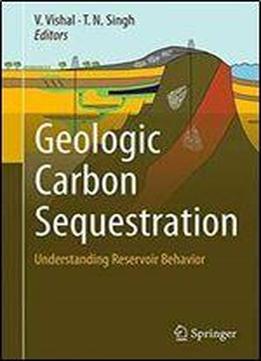
Geologic Carbon Sequestration: Understanding Reservoir Behavior
by Vishal /
2013 / English / PDF
9.8 MB Download
Editors: Vishal, V., Singh, T.N. (Eds.)
Focuses on geological storage of anthropogenic carbon dioxide
Presents advanced information on individual storage types, reservoir characterization and geo-engineering of sites
Offers a compilation of risk assessment analyses
This exclusive compilation written by eminent experts from more than ten countries, outlines the processes and methods for geologic sequestration in different sinks. It discusses and highlights the details of individual storage types, including recent advances in the science and technology of carbon storage. The topic is of immense t to geoscientists, reservoir engineers, environmentalists and researchers from the scientific and industrial communities working on the methodologies for carbon dioxide storage.
Increasing concentrations of anthropogenic carbon dioxide in the atmosphere are often held responsible for the rising temperature of the globe. Geologic sequestration prevents atmospheric release of the waste greenhouse gases by storing them underground for geologically significant periods of time. The book addresses the need for an understanding of carbon reservoir characteristics and behavior. Other book volumes on carbon capture, utilization and storage (CCUS) attempt to cover the entire process of CCUS, but the topic of geologic sequestration is not discussed in detail. This book focuses on the recent trends and up-to-date information on different storage rock types, ranging from deep saline aquifers to coal to basaltic formations.
Number of Illustrations and Tables
39 b/w illustrations, 69 illustrations in colour
Topics
Geotechnical Engineering & Applied Earth Sciences
Fossil Fuels (incl. Carbon Capture)
Climate Change/Climate Change Impacts











